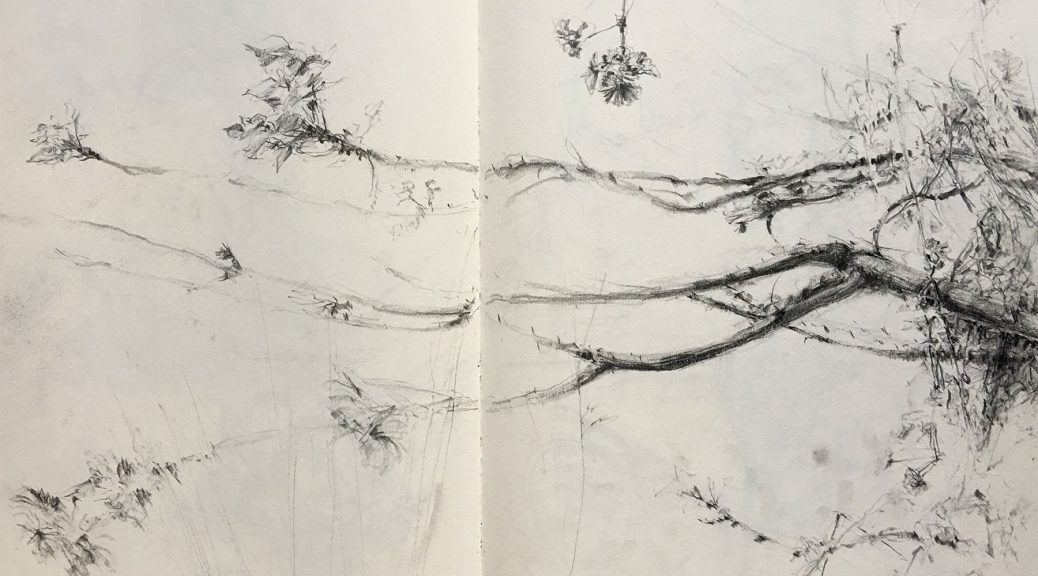As a young child, you likely learned to draw a tree by using a few circular shapes to symbolize masses of leaves supported by a narrow rectangle to depict the tree’s trunk. And if you were in a creative mood that day, a few angled lines could be added to suggest its branches.
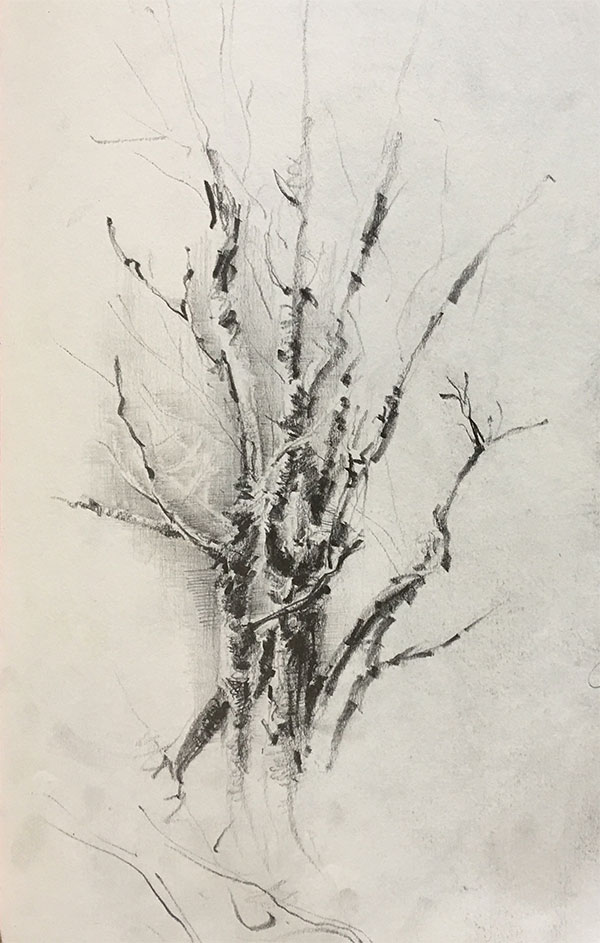
Of course drawings of trees could vary widely depending on where you lived as a kid. Tall triangles symbolized towering conifers. Or a long and curved line topped with serrated, curved shapes became a palm tree. It was easy and fun to draw a tree.
Unfortunately, the joy of drawing trees—and everything else—is abandoned by many kids as they become immersed in the rigors of writing, math, and reading. Most people leave childhood drawing behind to pursue life’s more grown-up callings. But not me.
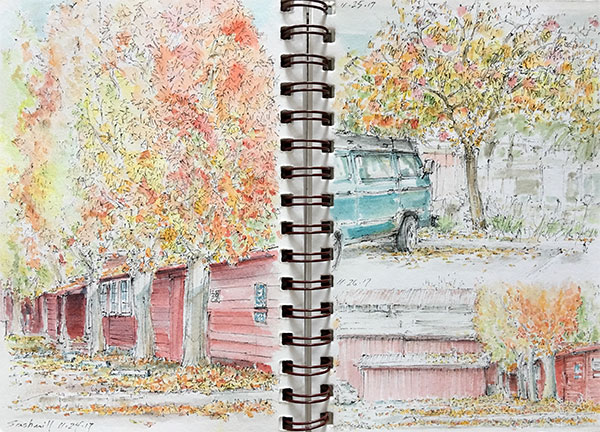
Drawing became my livelihood and a continuous source of joy. And as an adult, trees have remained one of my core subjects of interest. Various species of trees have been tapping their roots in the pages of my sketchbooks for several decades. It is like having my own forest of drawn memories bound together.
Following are some of my sketched moments with trees…
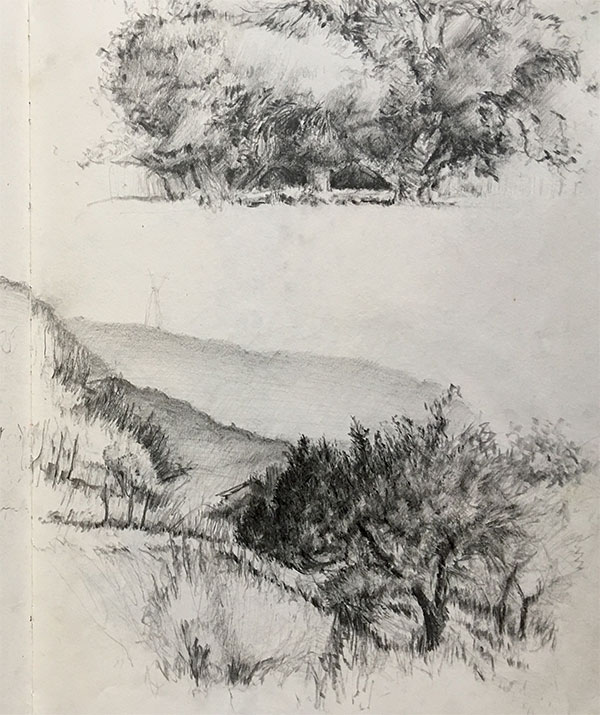
Trees are the master teachers that guide me in practicing essential skills in drawing from life. I find great pleasure in being surrounded by a stand of trees, getting acquainted with the silent sentries that guard my sacred sanctuary of sketching and learning.
Deliberate pressure of my pencil records the darkest shadows on branches of an oak tree, hidden from sunlight. A shift of focus requires delicacy of the pencil point to depict the hazy atmosphere that separates a tree from distant hills.
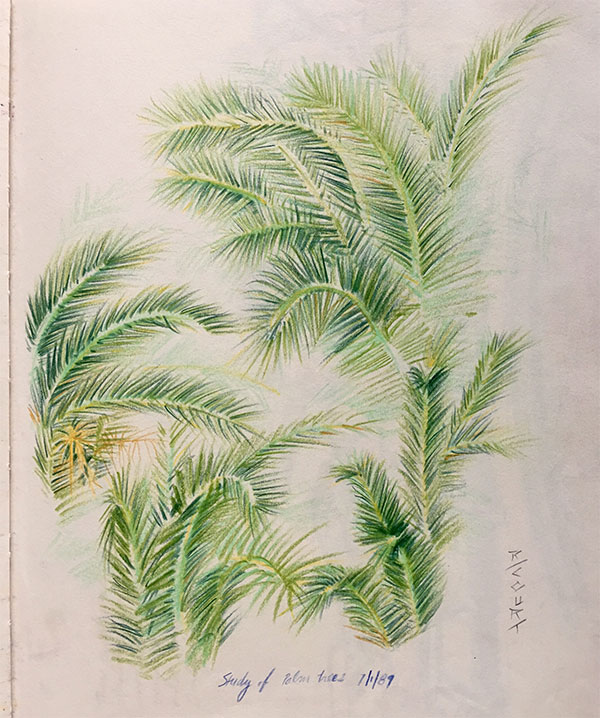
Messages From the Past
Paging through old sketchbooks is like reading a visual language that was coded many years ago—visual notes of my private history of skill development and sensational encounters.
My adventure into drawing the arboreal started in earnest on a warm afternoon in Mexico during the summer of 1989. While attempting to sketch a few palm fronds swaying in the breeze (shown above), I began to notice the contradiction between my childhood notions of drawing and the complex patterns of the fronds I observed.
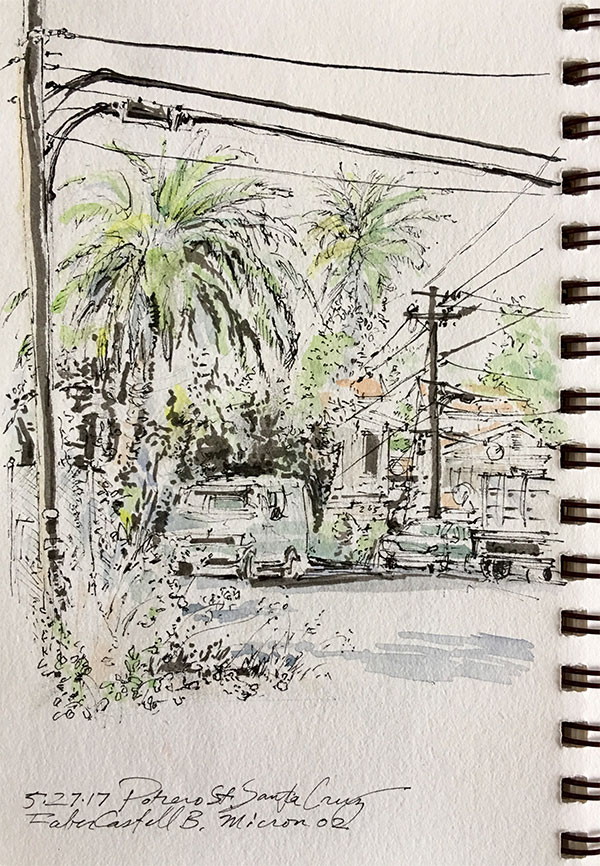
Palm trees are iconic symbols of the suburban lifestyle in Southern California where I grew up. And because of their ubiquitous presence in my life, I found it easier to default to the symbolic palm tree caricatures from imagination, rather than drawing realistic palm fronds swaying in the wind. As simple as I thought they would be to draw, it would take a lot of practice to make palm trees that looked natural. And practicing is what sketchbooks are for.
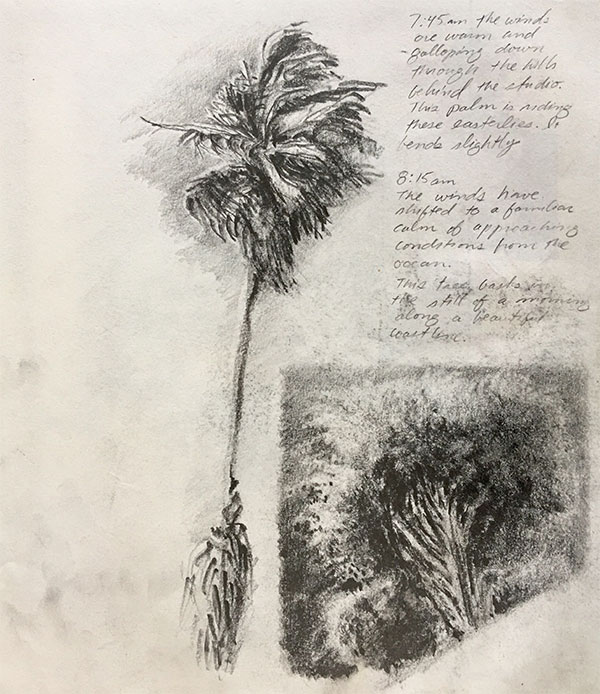
The simplicity of a palm’s features taught me to observe the complex movement of trees without becoming overwhelmed with too many branches and specific leafy details.
Because of shifting winds and the law of gravity, even the simplest, straightest palm tree can lean at a slight angle and have a bend in its trunk. I just had to take time to be still enough to see it, and then draw it.
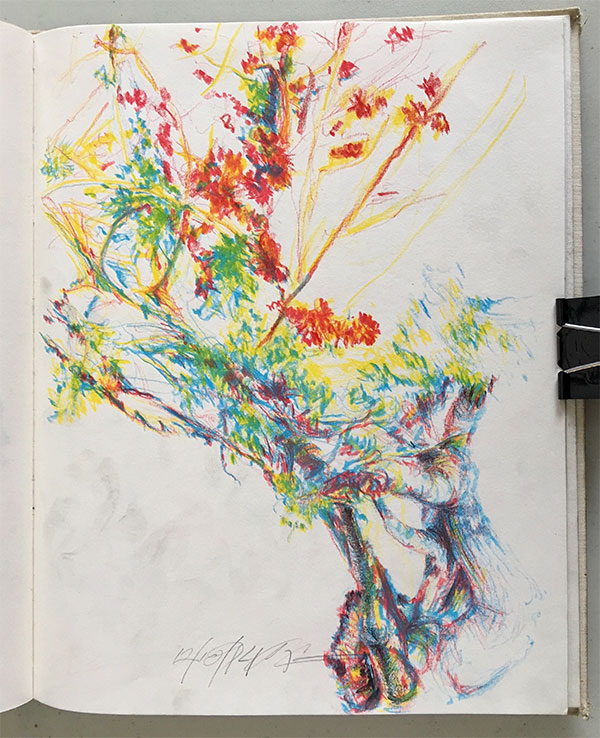
Trees Are Always Moving and Changing
My early encounters with a cluster of coral trees while living in rural Mexico in the 1990s opened my eyes to the gradual adjustments that trunks, branches, and leaves must make according to their surroundings. Limbs are constantly twisting and reaching for precious sunlight, or shifting their weight as they lean into nature’s harshest elements. Recording their movement became a delightful obsession.
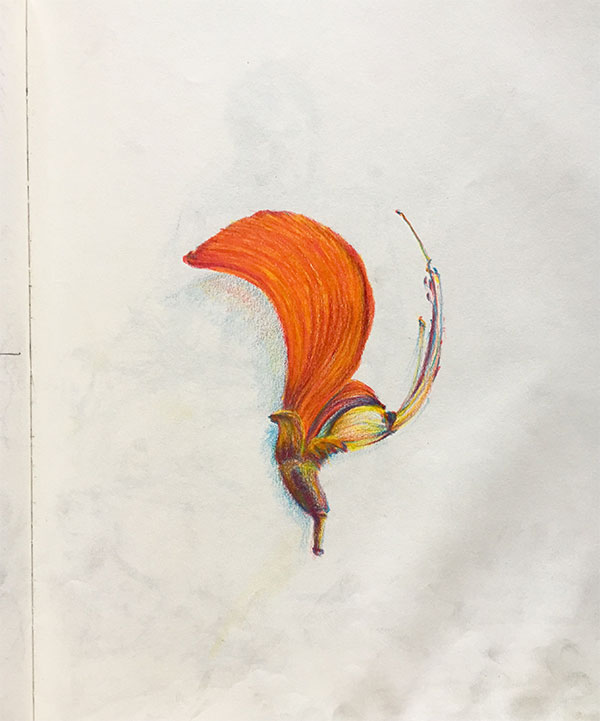
I was introduced to Prismacolor pencils by my high school art teacher in 1973, but didn’t use them to sketch trees until my days spent in Mexico. Rediscovering Prismacolors brought the coral trees to life on my sketchbook pages. Their waxy composition allowed me to explore light and texture by layering and mixing colors in a painterly fashion.
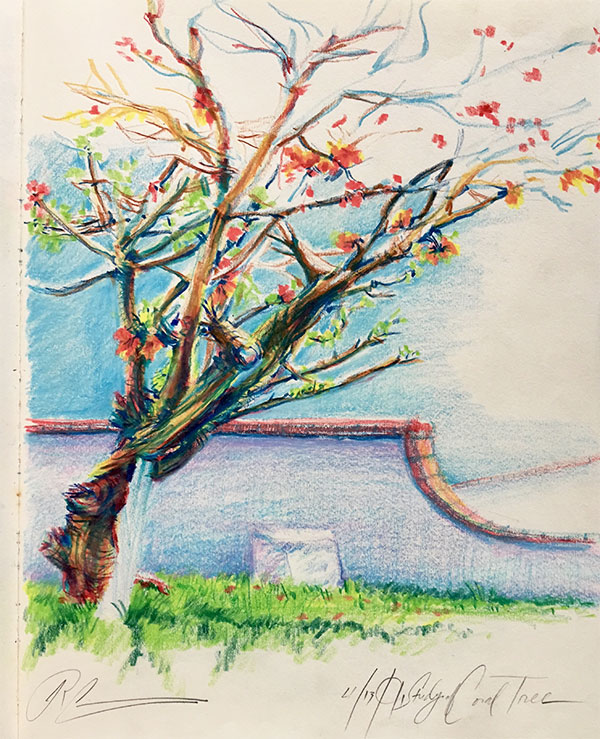
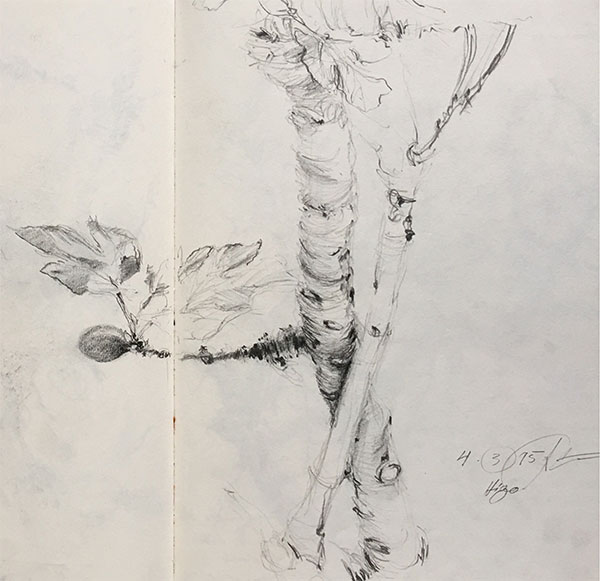
Because I enjoy sketching trees, scheduling time for practice remains a priority. Continued practice has taught me to perceive action lines that govern a tree’s growth and movement, making it easier to place the tree on the page, find its proportions, and emphasize its contour edges.
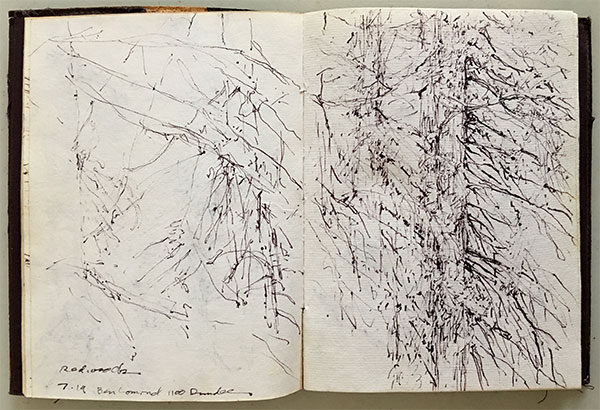
Sketching trees has given me confidence to attack more complex subject matter. The complexity of entwined branches and gnarled trunks often pushes my line work toward abstraction. The visual framework of entangled trees can appear more like sprawling river tributaries or brain synapses rather than sprigs and aging boughs.
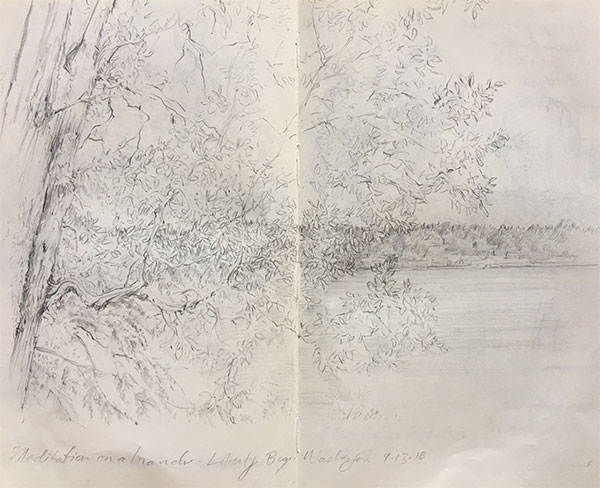
Trees are patient mentors. They wait nearby, ready to share their wisdom or strike a majestic pose. Wherever we are—walking in the woods, traveling abroad, or just looking outside our window— each tree portrait we sketch becomes a memory of time spent in wordless company with a new friend.
Each of us has already found complete confidence and joy in sketching a tree, even though we might not remember it. To relive that special moment, all we have to do is step back through history to our childhood, pick up a pencil and start drawing a few basic shapes.
A few more of my tree sketches to share with you…
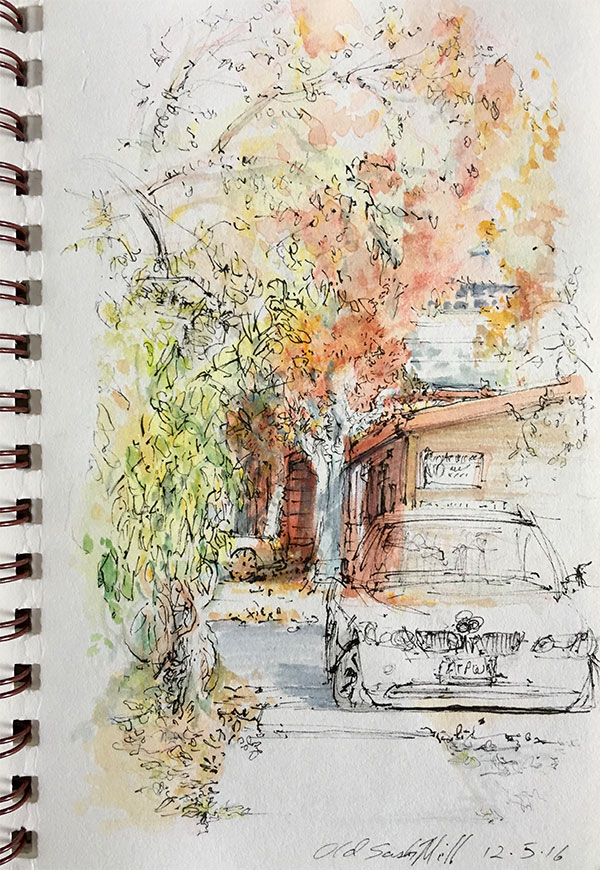
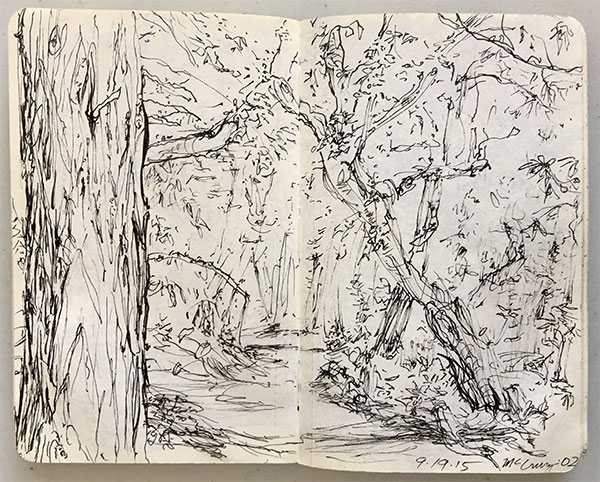
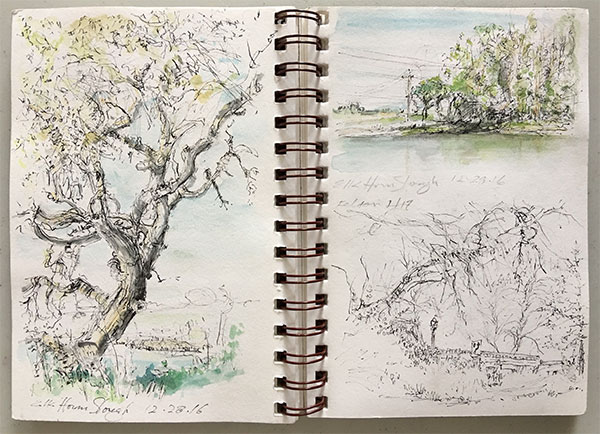
Note: All sketches were drawn from life while on location.
Featured image at top of page: 1995 Rancho La Pila, Mexico. Tree branches, 6B pencil.
Rob Court
Latest posts by Rob Court (see all)
- Drawing With Friends - April 11, 2022
- Frozen in Time: Cellphone Users as Models to Draw - April 8, 2022
- Getting Out & Getting Real - June 20, 2021
- Life Lines: Sketching the Unseen World of Movement - June 20, 2021
- The Ups & Downs of Urban Sketching - May 9, 2021
